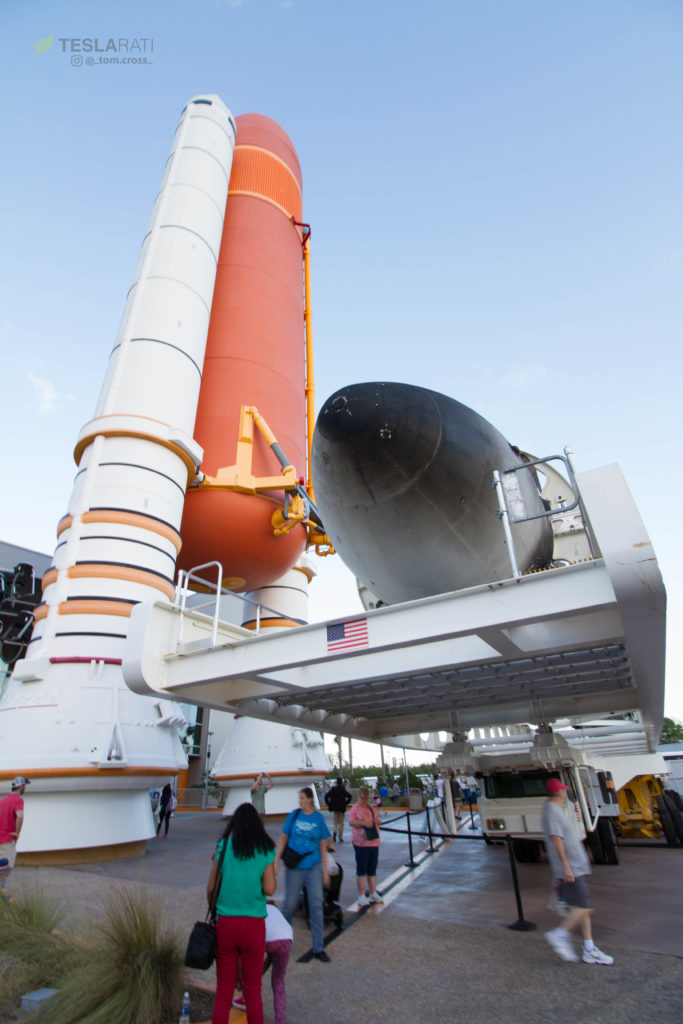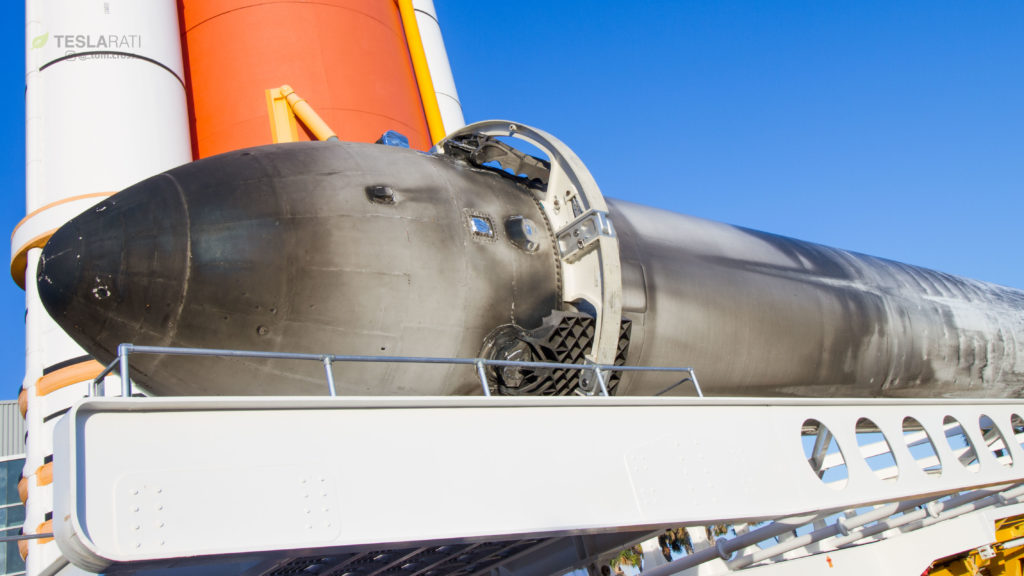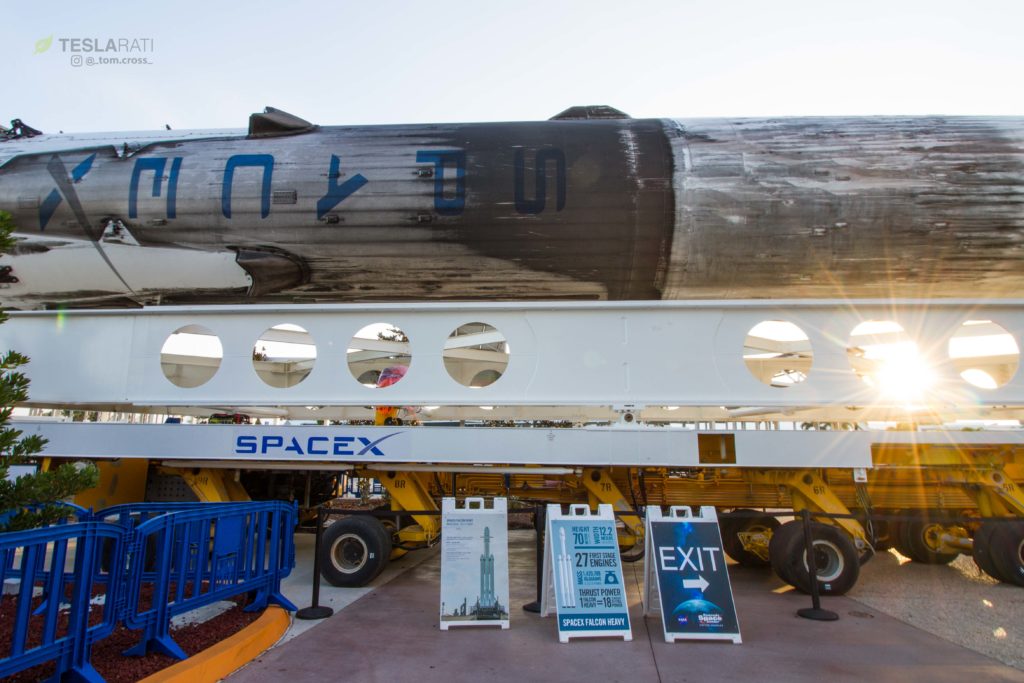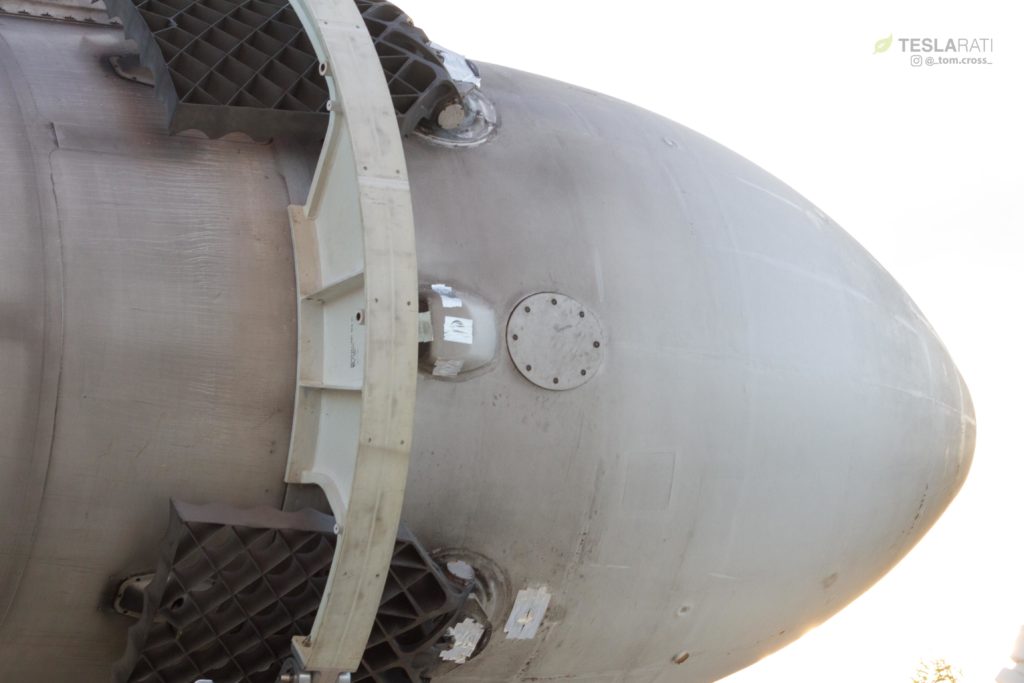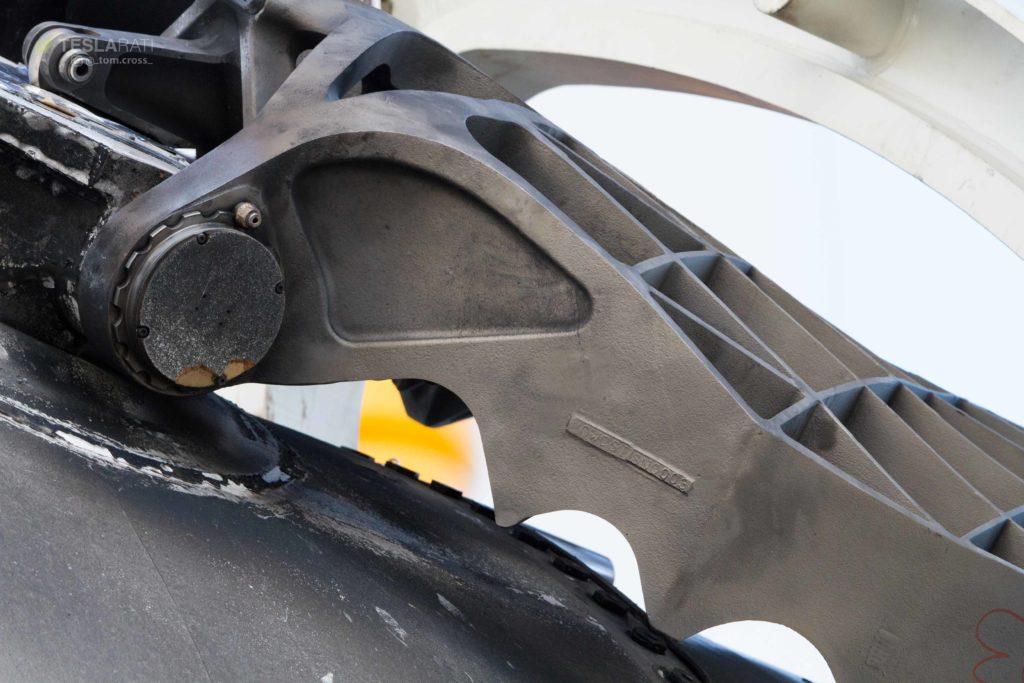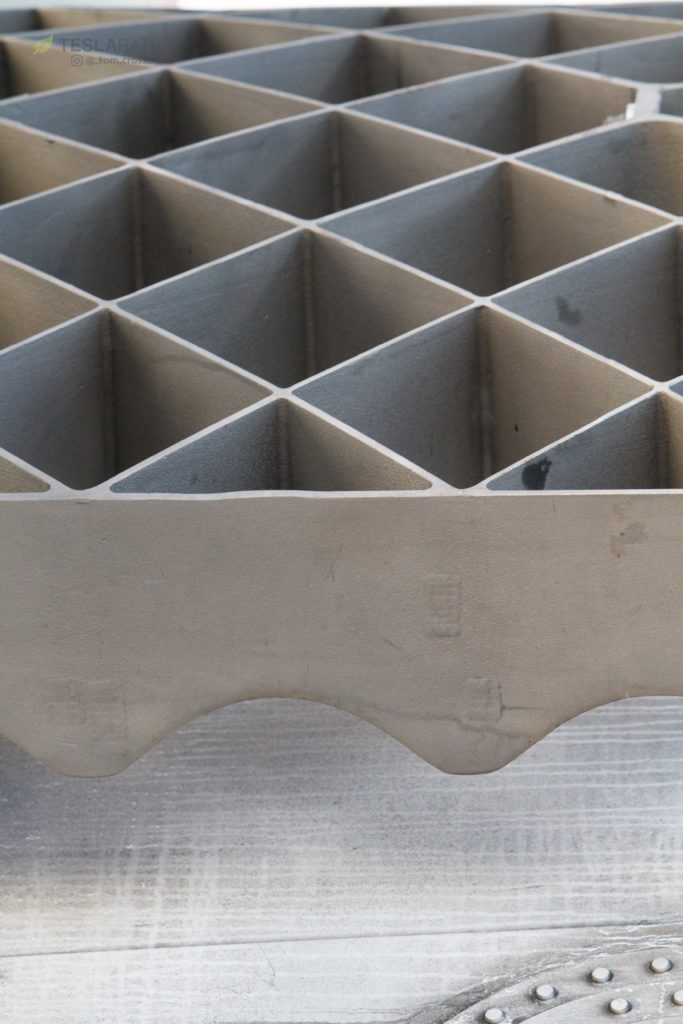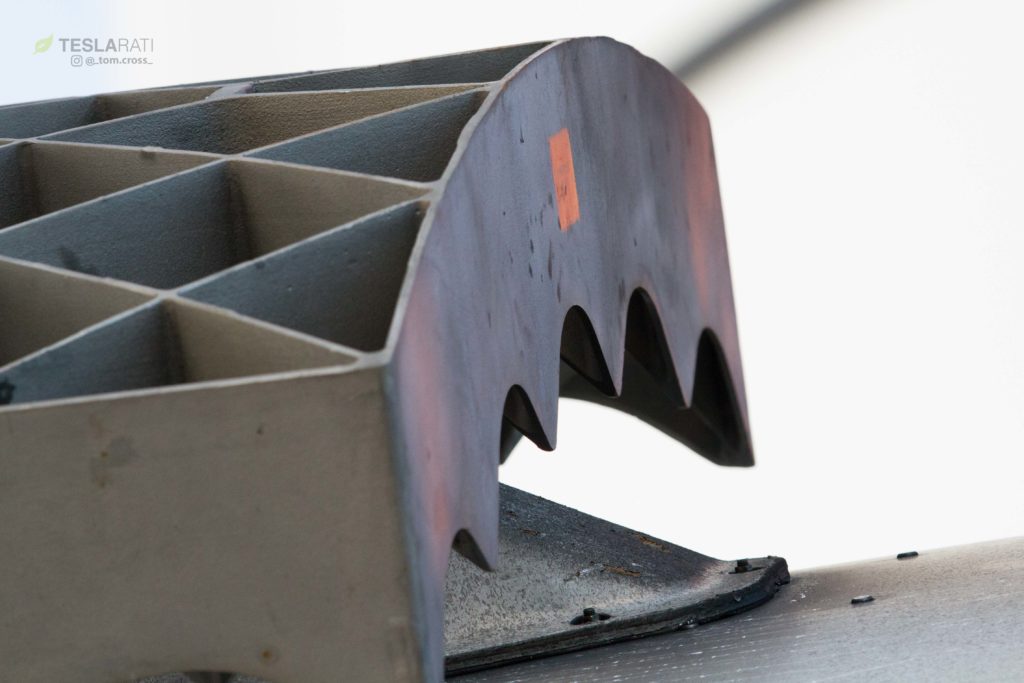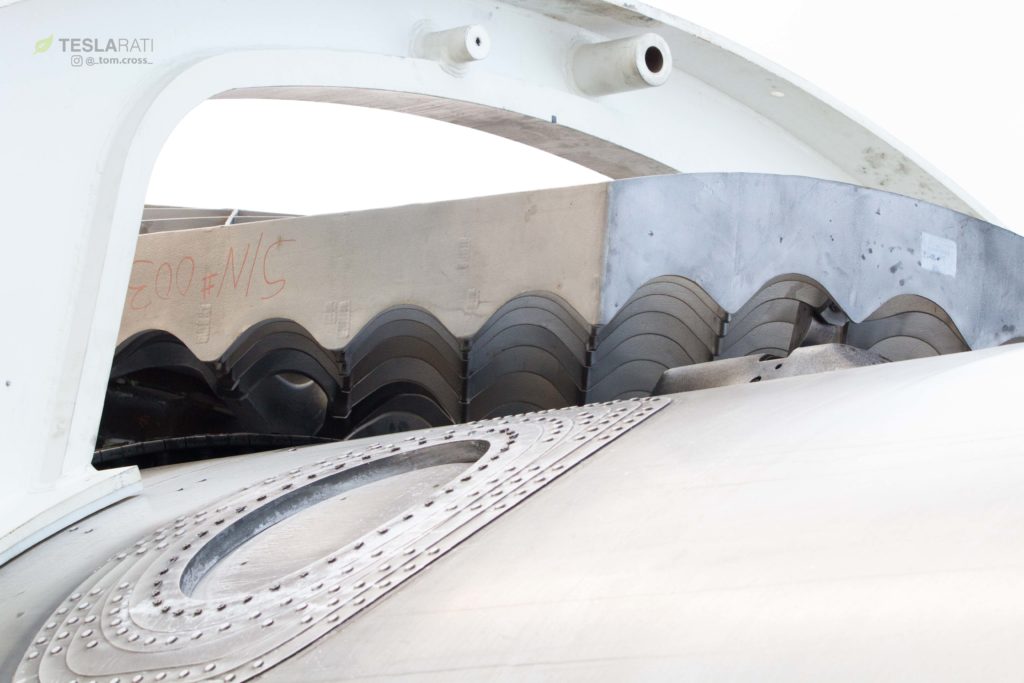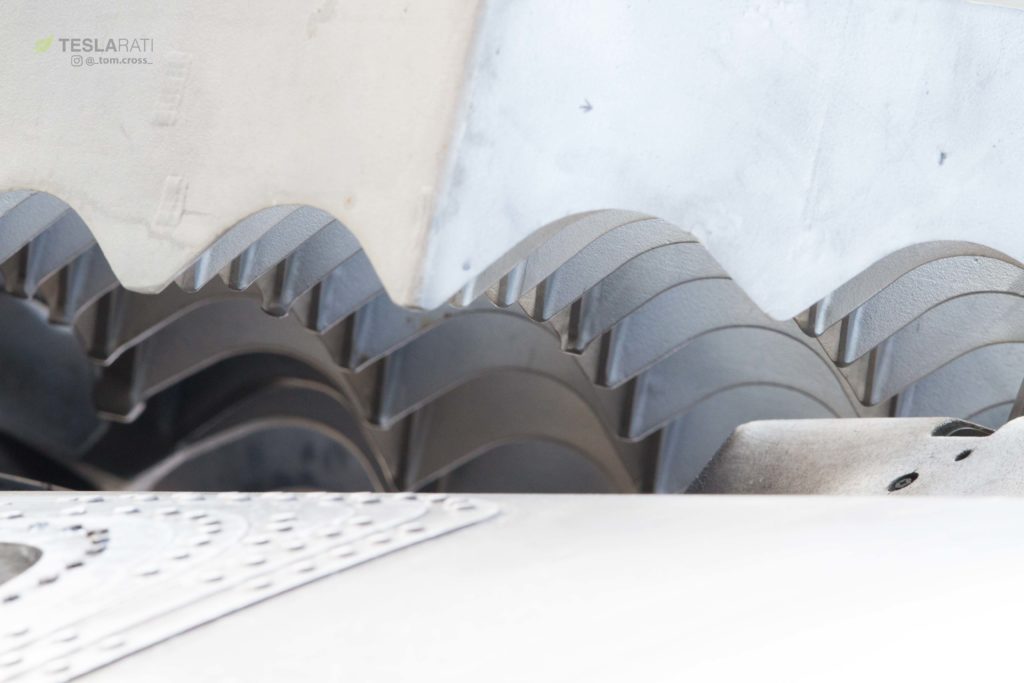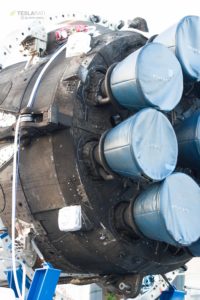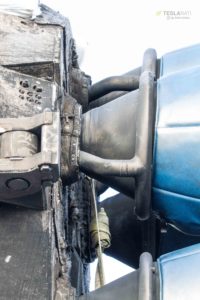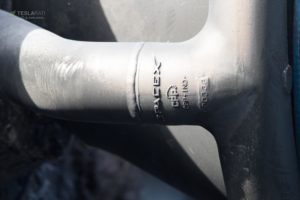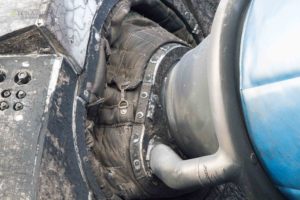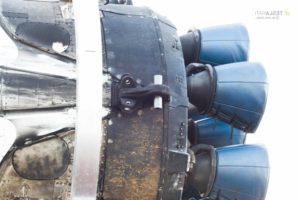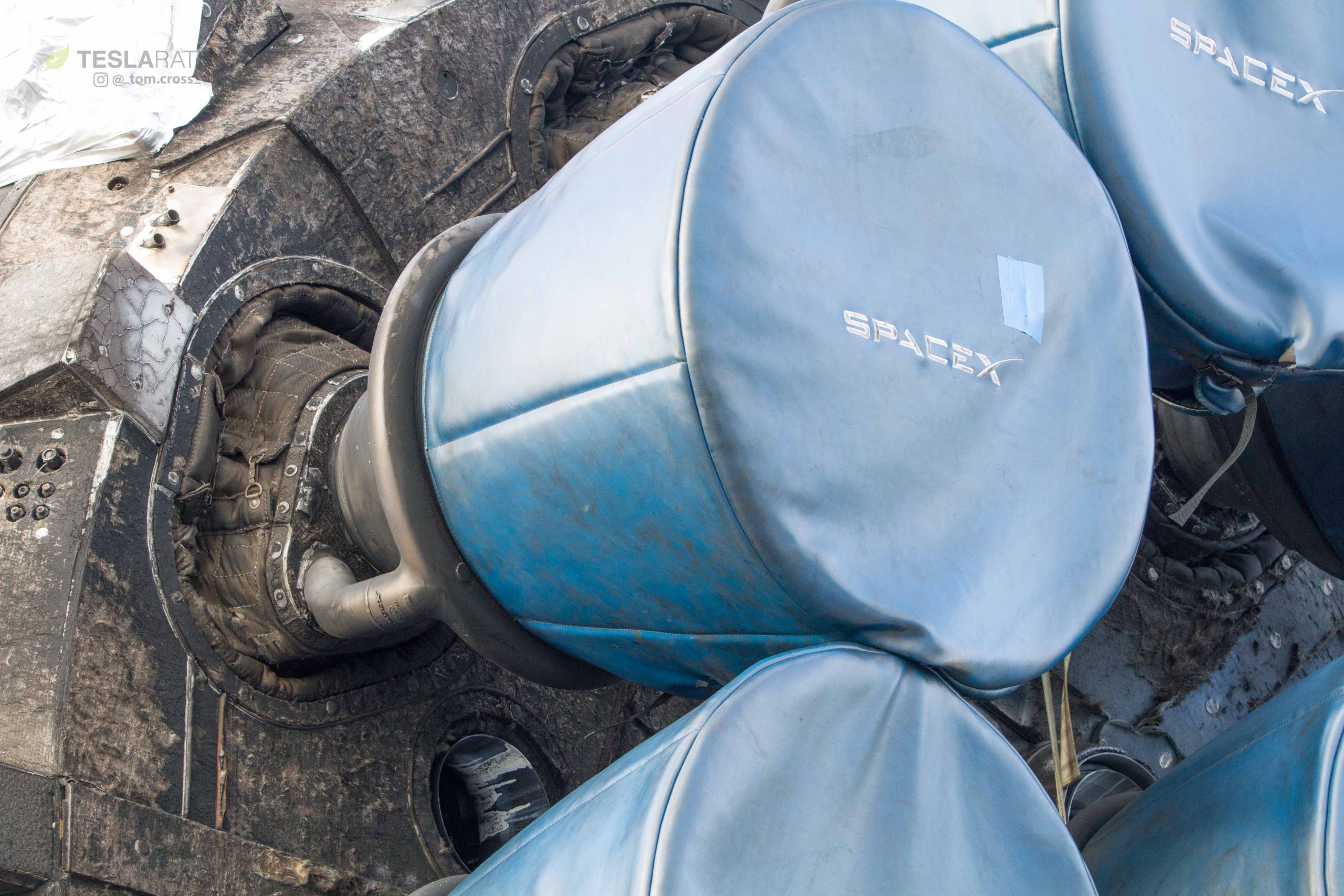

News
SpaceX’s used Falcon Heavy booster shown off in stunning detail [Gallery]
Less than two weeks after SpaceX’s Falcon Heavy performed a simultaneous first-stage landing, the Elon Musk-led space company has completed the process of recovering the massive rocket’s two side boosters, both of which can now lay claim to supporting two separate orbital missions. However, while fascinating in its own right, more interesting is the fact that SpaceX has chosen to very publicly display one of those two boosters front and center at the Kennedy Space Center Visitor Center (KSCVC).
It is likely no coincidence that the National Space Council is scheduled to have their second-ever meeting at Kennedy Space Center this Wednesday. One can readily imagine that SpaceX’s vast, sooty, flight-proven Falcon rockets can be quite an imposing and impressive sight, and it appears that the launch company is hoping to thoroughly impress the Space Council on Wednesday.
- Falcon Heavy’s side booster on display at the Kennedy Space Center visitor complex. (Tom Cross/Teslarati)
- This side booster is Core 1025, the same booster that launched and landed during the CRS-9 Cargo Dragon mission in 2016. (Tom Cross/Teslarati)
- A beautiful sunset eclipsed by SpaceX’s equally beautiful flight-proven Falcon Heavy booster. (Tom Cross/Teslarati)
Regardless of odd and interesting jockeying, the Falcon Heavy booster display is an absolutely unprecedented opportunity in SpaceX history, and Teslarati’s East coast photographer Tom Cross jumped on it. This rocket display is easily the first time the general public has ever been allowed to get so close to fresh rocket hardware, let alone the entire booster of a brand new launch vehicle. Tom has captured some extraordinarily detailed photos of various flight-proven rocket hardware, ranging from titanium grid fins to Merlin engines and even more esoteric parts, like landing leg connecting points.
Titanium grid fins
Appearing nearly unscathed after exposure to reentry temperatures that are often less kind to aluminum, SpaceX’s second flight-test of titanium grid fins has been a resounding success. It’s been hinted by CEO Elon Musk that these massive pieces of cast metal are probably the most expensive individual components on a Falcon 9, and they certainly look every bit the part. Check out these pieces of metalworking art in the best detail yet.

Falcon rockets are constructed largely of aluminum and painted with compounds that are designed to burn off under the heat of reentry, known as ablation. (Tom Cross/Teslarati)
- Falcon Heavy side booster 1025’s flight-proven nose con and grid fins, girdled by one of SpaceX’s rocket transporters. (Tom Cross/Teslarati)
- RIP B1044’s titanium grid fins. May they make a happy little reef at the bottom of the ocean. (Tom Cross)
- Note the serial number, this grid fin appears to be the 3rd titanium fin ever produced- SN00003. (Tom Cross/Teslarati)
- Details of the grid fin. (Tom Cross/Teslarati)
- Rather menacing, eh? (Tom Cross/Teslarati)
- The sinuous curves of the grid fins allow them to better attack the air at the highest pressure points during reentry. (Tom Cross/Teslarati)
- They also happen to look incredibly beautiful. (Tom Cross/Teslarati)
Merlin engines and octaweb details
Taking the brunt of the force and heat of reentry, Falcon Heavy booster 1025’s business end is a powerful display of the intense environment SpaceX’s rockets must survive in order to successfully find their way to land (or sea). Around each Merlin engine is an insulating ceramic fiber blanket intended to protect the more sensitive components of rocket plumbing from the intense heat and buffeting experienced by the engine bells. The octaweb and engine area is also lined with a fair amount of cork – yes, the same material you cork a wine bottle with – designed to sap up the heat of reentry and often ablate. This simple material has worked incredibly well for the rocket company, although it is considerably less than reusable, and likely has to be replaced each launch. Falcon 9 Block 5, expected to begin integrated testing in Texas just days from now, will likely switch to a more reusable material for its octaweb heat shield.

Falcon Heavy booster 1025’s well-worn octaweb. The Merlin engines are underneath their blue cozies. (Tom Cross/Teslarati)

A beautiful capture of one of the booster’s nine Merlin engines, showing off the pipe used to cool the engine bell, as well as the ceramic blanket that protects its more sensitive plumbing. (Tom Cross/Teslarati)
- All nine Merlin 1Ds displayed with their adorable cozies. (Tom Cross/Teslarati)
- Falcon Heavy side booster B1025 gives a sense of the sheer brutality of reentry conditions. (Tom Cross)
- An incredibly detail shot of the side of the octaweb. The large chunk of smooth metal in the center is actually one of the booster’s connection points to the Falcon Heavy center core. (Tom Cross/Teslarati)
- SpaceX’s 338th Merlin engine on display. This particular component circulates cold propellant around the engine bell to cool it down. (Tom Cross/Teslarati)
- A beautiful capture of one of the booster’s nine Merlin engines, showing off the pipe used to cool the engine bell, as well as the ceramic blanket that protects its more sensitive plumbing. (Tom Cross/Teslarati)
- Note the pieces of cork that have been torn off by the buffeting and heat on the lefthand side. (Tom Cross)
Ultimately, this Falcon Heavy booster display is an incredible show of force to the National Space Council, as well as an extraordinary opportunity and inspiration for KSC visitors. Teslarati photographer Tom Cross has given us one of the most detailed looks yet at a complete SpaceX rocket, not to mention such a historic and flight-proven specimen.
The National Space Council meets early tomorrow morning (10:00 am EST, Feb. 21), and will be live-streamed here. SpaceX’s very own President and COO Gwynne Shotwell is expected to be in attendance, and will likely present a brief statement to the council.
Be sure to follow Teslarati’s space team for exclusive backstage access to SpaceX, coast-to-coast:

Elon Musk
Elon Musk’s X will start using a Tesla-like software update strategy
The initiative seems designed to accelerate updates to the social media platform, while maintaining maximum transparency.

Elon Musk’s social media platform X will adopt a Tesla-esque approach to software updates for its algorithm.
The initiative seems designed to accelerate updates to the social media platform, while maintaining maximum transparency.
X’s updates to its updates
As per Musk in a post on X, the social media company will be making a new algorithm to determine what organic and advertising posts are recommended to users. These updates would then be repeated every four weeks.
“We will make the new 𝕏 algorithm, including all code used to determine what organic and advertising posts are recommended to users, open source in 7 days. This will be repeated every 4 weeks, with comprehensive developer notes, to help you understand what changed,” Musk wrote in his post.
The initiative somewhat mirrors Tesla’s over-the-air update model, where vehicle software is regularly refined and pushed to users with detailed release notes. This should allow users to better understand the details of X’s every update and foster a healthy feedback loop for the social media platform.
xAI and X
X, formerly Twitter, has been acquired by Elon Musk’s artificial intelligence startup, xAI last year. Since then, xAI has seen a rapid rise in valuation. Following the company’s the company’s upsized $20 billion Series E funding round, estimates now suggest that xAI is worth tens about $230 to $235 billion. That’s several times larger than Tesla when Elon Musk received his controversial 2018 CEO Performance Award.
As per xAI, the Series E funding round attracted a diverse group of investors, including Valor Equity Partners, Stepstone Group, Fidelity Management & Research Company, Qatar Investment Authority, MGX, and Baron Capital Group, among others. Strategic partners NVIDIA and Cisco Investments also continued support for building the world’s largest GPU clusters.
News
Tesla FSD Supervised wins MotorTrend’s Best Driver Assistance Award
The decision marks a notable reversal for the publication from prior years, with judges citing major real-world improvements that pushed Tesla’s latest FSD software ahead of every competing ADAS system.

Tesla’s Full Self-Driving (Supervised) system has been named the best driver-assistance technology on the market, earning top honors at the 2026 MotorTrend Best Tech Awards.
The decision marks a notable reversal for the publication from prior years, with judges citing major real-world improvements that pushed Tesla’s latest FSD software ahead of every competing ADAS system. And it wasn’t even close.
MotorTrend reverses course
MotorTrend awarded Tesla FSD (Supervised) its 2026 Best Tech Driver Assistance title after extensive testing of the latest v14 software. The publication acknowledged that it had previously criticized earlier versions of FSD for erratic behavior and near-miss incidents, ultimately favoring rivals such as GM’s Super Cruise in earlier evaluations.
According to MotorTrend, the newest iteration of FSD resolved many of those shortcomings. Testers said v14 showed far smoother behavior in complex urban scenarios, including unprotected left turns, traffic circles, emergency vehicles, and dense city streets. While the system still requires constant driver supervision, judges concluded that no other advanced driver-assistance system currently matches its breadth of capability.
Unlike rival systems that rely on combinations of cameras, radar, lidar, and mapped highways, Tesla’s FSD operates using a camera-only approach and is capable of driving on city streets, rural roads, and freeways. MotorTrend stated that pure utility, the ability to handle nearly all road types, ultimately separated FSD from competitors like Ford BlueCruise, GM Super Cruise, and BMW’s Highway Assistant.
High cost and high capability
MotorTrend also addressed FSD’s pricing, which remains significantly higher than rival systems. Tesla currently charges $8,000 for a one-time purchase or $99 per month for a subscription, compared with far lower upfront and subscription costs from other automakers. The publication noted that the premium is justified given FSD’s unmatched scope and continuous software evolution.
Safety remained a central focus of the evaluation. While testers reported collision-free operation over thousands of miles, they noted ongoing concerns around FSD’s configurable driving modes, including options that allow aggressive driving and speeds beyond posted limits. MotorTrend emphasized that, like all Level 2 systems, FSD still depends on a fully attentive human driver at all times.
Despite those caveats, the publication concluded that Tesla’s rapid software progress fundamentally reshaped the competitive landscape. For drivers seeking the most capable hands-on driver-assistance system available today, MotorTrend concluded Tesla FSD (Supervised) now stands alone at the top.
News
Elon Musk’s Grokipedia surges to 5.6M articles, almost 79% of English Wikipedia
The explosive growth marks a major milestone for the AI-powered online encyclopedia, which was launched by Elon Musk’s xAI just months ago.

Elon Musk’s Grokipedia has grown to an impressive 5,615,201 articles as of today, closing in on 79% of the English Wikipedia’s current total of 7,119,376 articles.
The explosive growth marks a major milestone for the AI-powered online encyclopedia, which was launched by Elon Musk’s xAI just months ago. Needless to say, it would only be a matter of time before Grokipedia exceeds English Wikipedia in sheer volume.
Grokipedia’s rapid growth
xAI’s vision for Grokipedia emphasizes neutrality, while Grok’s reasoning capabilities allow for fast drafting and fact-checking. When Elon Musk announced the initiative in late September 2025, he noted that Grokipedia would be an improvement to Wikipedia because it would be designed to avoid bias.
At the time, Musk noted that Grokipedia “is a necessary step towards the xAI goal of understanding the Universe.”
Grokipedia was launched in late October, and while xAI was careful to list it only as Version 0.1 at the time, the online encyclopedia immediately earned praise. Wikipedia co-founder Larry Sanger highlighted the project’s innovative approach, noting how it leverages AI to fill knowledge gaps and enable rapid updates. Netizens also observed how Grokipedia tends to present articles in a more objective manner compared to Wikipedia, which is edited by humans.
Elon Musk’s ambitious plans
With 5,615,201 total articles, Grokipedia has now grown to almost 79% of English Wikipedia’s article base. This is incredibly quick, though Grokipedia remains text-only for now. xAI, for its part, has now updated the online encyclopedia’s iteration to v0.2.
Elon Musk has shared bold ideas for Grokipedia, including sending a record of the entire knowledge base to space as part of xAI’s mission to preserve and expand human understanding. At some point, Musk stated that Grokipedia will be renamed to Encyclopedia Galactica, and it will be sent to the cosmos.
“When Grokipedia is good enough (long way to go), we will change the name to Encyclopedia Galactica. It will be an open source distillation of all knowledge, including audio, images and video. Join xAI to help build the sci-fi version of the Library of Alexandria!” Musk wrote, adding in a later post that “Copies will be etched in stone and sent to the Moon, Mars and beyond. This time, it will not be lost.”
